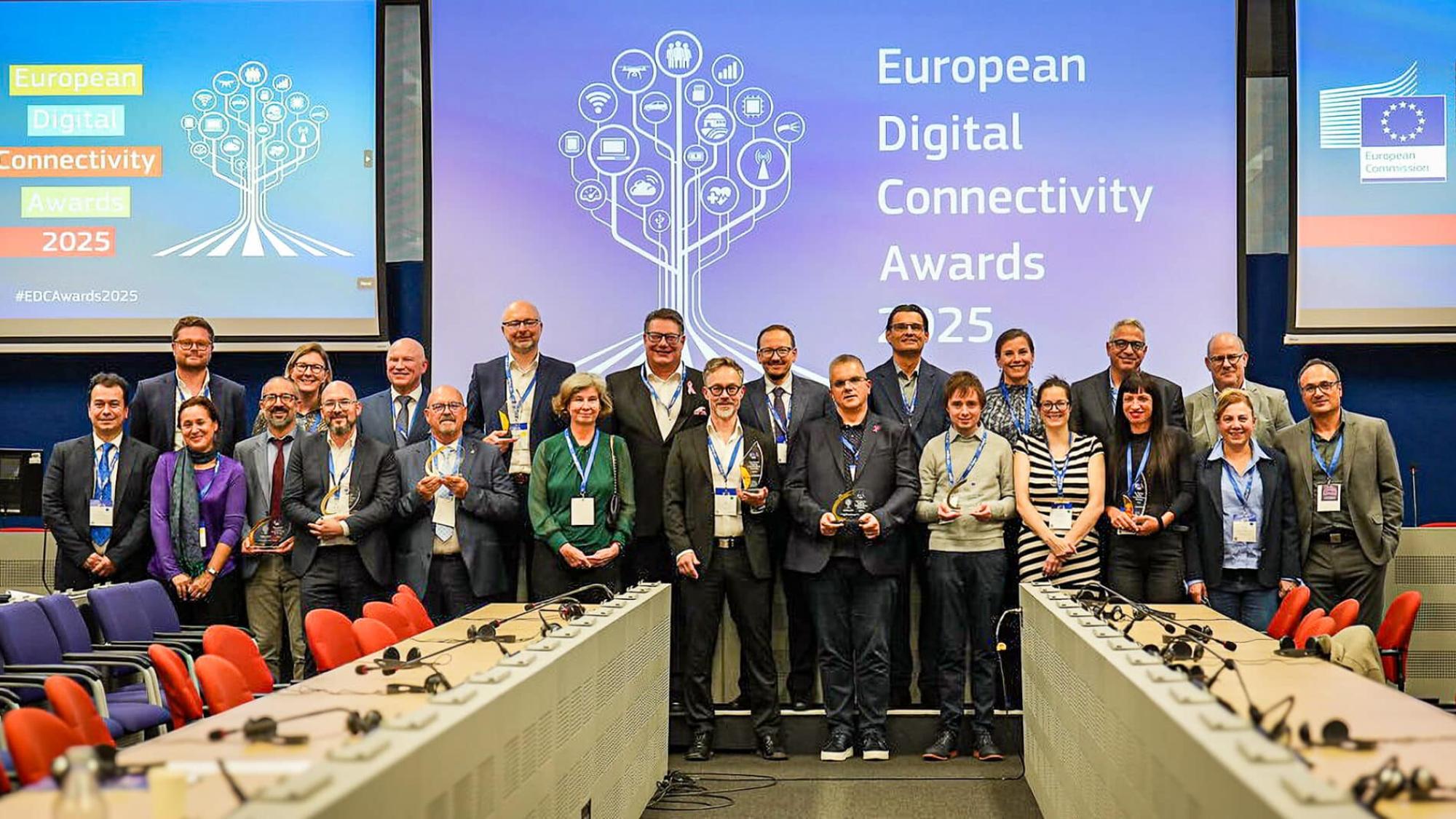Project Hola 5G Oulu won European Digital Connectivity Award 2025

The project was awarded for successfully implementing a private 5G network in a functioning hospital environment – the first of its kind in Europe. The special value of Hola 5G lies in its bold approach to bringing new wireless technology to a vertical where the need is great, but implementation is exceptionally challenging.
In hospitals, the adoption of technology is restricted by strict regulations related to patient safety and data protection, as well as critical operational requirements and high reliability standards. Yet it is precisely in such environments that innovations have the greatest potential to impact society. The success of the project has been driven by the innovative and open-minded attitude toward new technology of Oulu University Hospital (OYS) and the Wellbeing Services County of North Ostrobothnia (Pohde).
“Whenever I’ve presented the project to colleagues elsewhere in Europe, the first question has always been: how did you get the hospital on board? That has been easy to answer. Our university hospital has actually been the initiator,” says associate professor Erkki Harjula.
“Hola 5G Oulu was born from the realities of hospital life — from seeing daily challenges that connectivity could truly solve. We didn’t want to imagine the future of healthcare; we wanted to build it, here and now. With 5G, we’re showing that technology can make care not just faster, but smarter and safer,” says Jani Katisko, medical physicist.
Real-world use cases for 5G are creating the necessary foundation for the rollout of 6G. From this perspective, hospitals are a particularly demanding vertical. Networks must simultaneously support real-time applications such as surgical assistance and patient monitoring, critical alerts and large data transfers, such as CT images — all while meeting strict security and privacy requirements. Such use cases help identify technological limitations, refine solutions and validate performance in real-world conditions — providing a testbed for the introduction of 6G.
Petri Parviainen, head of sales at Boldyn Networks, sums it up: “Real use cases in 5G also lay the foundation for the introduction of 6G. If operators cannot see the concrete value of 5G through use cases, it will be difficult to see the need or market for 6G either.”
EU reports indicate that private 5G networks across Europe remain largely in the development stage (TRL 6–7). Progress is hindered by high costs, limited awareness, and gaps in technical expertise. Pilot projects such as Hola 5G help close these gaps by raising awareness, demonstrating practical impact, and paving the way for new business models. Hospital environments, in particular, act as living innovation platforms where operators and technology providers can demonstrate the value of 5G and experiment with architectures that will shape future 6G networks.
The CWC project team was responsible for testing the security and functionality of the network. The work began with radio frequency (RF) measurements to ensure that 5G radios wouldn’t interfere with sensitive hospital instruments, or vice versa, and that radiation levels would remain safe even near the antennas.
“For radio engineers, these concerns may seem unnecessary, since such technologies are already tightly regulated for safety and interference. Hospital professionals, however, wanted concrete measurement data from this specific network to reassure those who had concerns,” says Harjula.
After the RF measurements, the team tested the network’s performance and scalability and simulated scenarios under disruptions. The network was deliberately stressed with heavy traffic, base stations were powered down, and denial-of-service attacks were launched, yet the hospital’s critical systems remained operational, supported by redundant key components of the network.
CWC’s research contribution provides a solid foundation for future work towards resilient 6G architectures. Follow-up projects will focus on, e.g., deploying and evaluating edge cloud computing to optimise hospital applications and strengthen network resilience during large-scale disruptions such as power or connectivity outages.
The success of the Hola 5G project rests on simple principles. Start with what’s necessary, continue with what’s possible, and you may end up achieving what once seemed impossible—or at least difficult.
“In technology, we often lead with the technology itself and only later consider its applications — a habit that may feel natural to us, but isn’t always the most effective way forward,” says Harjula. “However, if engineers didn’t bring new technologies forward, it would be unrealistic to expect sectors like healthcare to envision their potential.”
Real impact, he says, emerges somewhere in between. Technology creates value only when it meets genuine needs. Hola 5G demonstrates that when vision, courage, and collaboration come together, it’s possible to be a pioneer and set the direction on a European and even global scale.